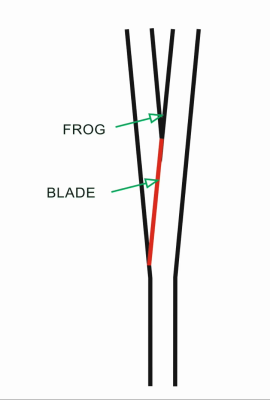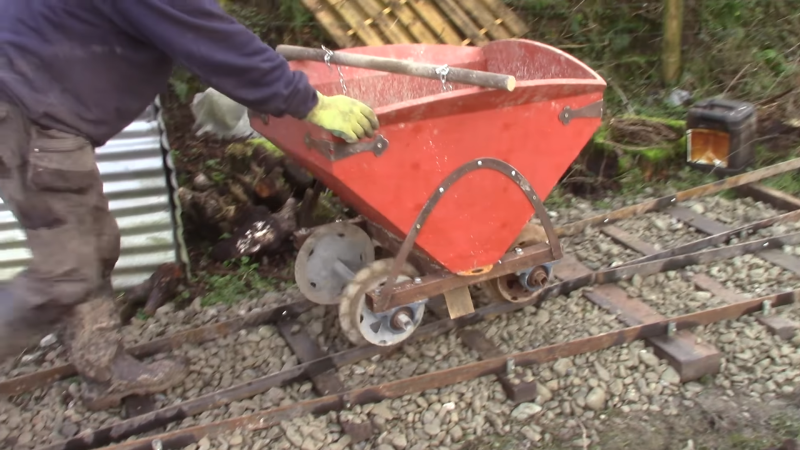A home-built railway is one of the greatest things you could possibly use to shift loads around your farm. [Tim] and [Sandra] of YouTube channel [Way Out West] have just such a setup, but they needed some switching points to help direct carriages from one set of rails to another. Fabrication ensued!

The railway relies on very simple rails made with flat bar and angle iron, allowing the railway to be built without a lot of heavy blacksmithing work. For a light-duty home railway, these are more than strong enough to do the job.
As for the points, a simple V-shaped frog-and-blade design was used. The frog is the V-shaped section where the rails diverge into two directions, sitting in the center of the Y, while the blade is the part that moves to either side to guide the carriages in one way or t’other.
The blade consists of a 2.2 meter long piece of angle iron with a pin welded on, allowing it to pivot. Two pieces of flat bar were then welded together with a pin to make the frog. Two metal bushes were then forced into a wooden sleeper, allowing the blade to pivot as needed. The rails themselves are slightly kinked as needed and everything tacked down into sleepers with bolts and pipe pegs.
The design runs smoothly, much to [Tim]’s enjoyment. It’s a clear improvement over the earlier design we looked at least year.
There’s something inherently charming about a railway built with little more than wood, metal, and hammers. Seeing the little stone wagon run down the rails to bed in the sleepers is utterly joyful in a way that’s difficult to fully explain. Video after the break.
[Thanks to Foley for the tip!]
















Somebody should put Tim and Sandra in touch with the guy who did the electric Minecraft cart featured earlier on Hackaday.
Needs mouse (small block chevy)!
This is one of those sleeper HaD articles where you can only cart your load so far and then due to all the railing there comes a point where your project has to change direction.
On Approach, you’ve just got to roll with it. I think they’ve taken the right angle, flicked the switch and they’re on the right track now.
You’ll see yourself out, right?
What is your point? I think these kind of conversations tend to lose track of the destination and derail the entire constructive comment idea. I prefer when we all move in a parallel direction, and not diverge our thoughts too much. All tied together, not jumping like frogs, so to speak.
I was beginning to think that y’all had a loco motive when I began reading your response, but it sounds like y’all have been training for y’all’s entire lives for this moment. Some clever words were hitched together before y’all smacked your message on the caboose and sent it off.
I want his drill jig. I have a permanent reminder of why doing that freehand is a stupid idea!